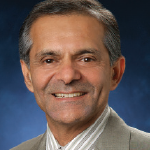In 2014, the American College of Rheumatology (ACR) was one of 25 healthcare associations invited to participate in an initiative by the American Medical Association (AMA) to reduce the public health epidemic posed by the abuse of prescription opioids.1
The AMA initiative is based on the belief that physicians are professionally obligated to participate in reducing prescription opioid abuse. To that end, the AMA task force encourages physicians to participate in the initiative by 1) registering and using state prescription drug monitoring programs (PDMPs) to check on a patient’s prescription history, 2) becoming better educated on ways to manage pain and promote responsible and safe opioid prescribing, 3) supporting overdose prevention measures, such as increased access to naloxone, 4) reducing the stigma of substance abuse disorder and improving access to treatment and 5) making sure that patients can receive comprehensive pain management treatment and are not stigmatized.2
Through the efforts of the AMA task force, progress is being made to achieve these goals. Current reports show a 40% increase in 2015 from 2014 in physicians’ use of PDMPs, an 81% increase from 2012 to 2016 in physicians certified to treat substance abuse disorders, an 11% increase from 2014 to 2015 in the use of prescriptions to help treat opioid use disorders, and a 1,170% increase from 2013 to 2015 in physicians co-prescribing naloxone. In addition, nearly 50,000 courses related to opioid prescribing and pain management have been accessed or completed over the past year.3
Additional steps that physicians can immediately take to reverse the opioid abuse epidemic were further outlined in a blog published in May 2016 by Steven J. Stack, MD, current president of the AMA.4 In the blog, Dr. Stack encouraged physicians to 1) use non-pharmacologic therapy and non-opioid pharmacology therapy over opioids in new patients with chronic non-cancer pain (unless expected benefits outweigh risks), 2) prescribe the lowest effective opioid dose for shortest possible duration for severe pain following surgery and for acutely injured patients, 3) work compassionately to reduce opioid exposure in patients already on chronic opioid therapy (when risks of opioid therapy in these patients exceed the benefits) and 4) identify and assist patients with opioid use disorder to obtain treatment.
References
- The American Medical Association Task Force to Reduce Prescription Opioid Abuse. American Medical Association.
- Preventing opioid abuse: Be part of the solution. American Medical Association.
- The AMA Task Force to Reduce Opioid Abuse. Physicians’ progress to reverse nation’s opioid epidemic. Fact Sheet.
- Stack SJ. Confronting a crisis: An open letter to America’s physicians on the opioid epidemic [the blog]. The Huffington Post. 2016 May 11.
Training & Education Resources


